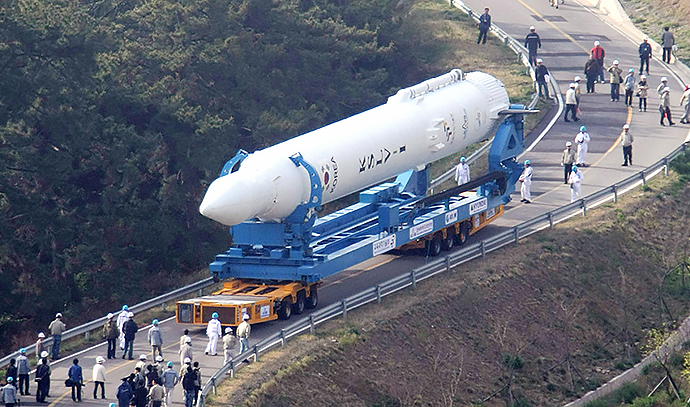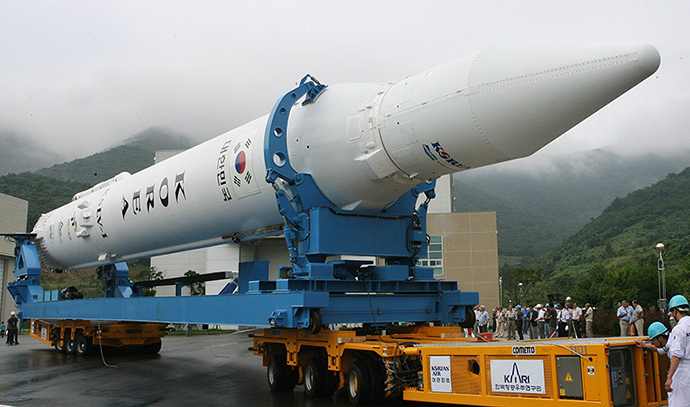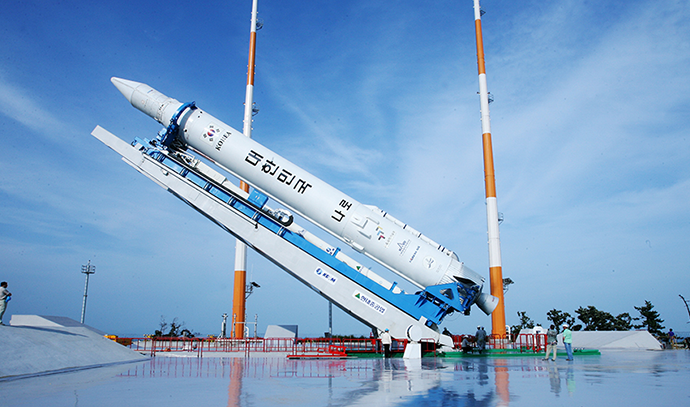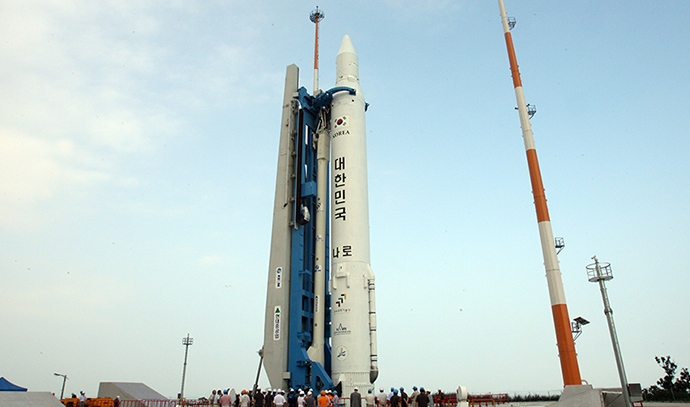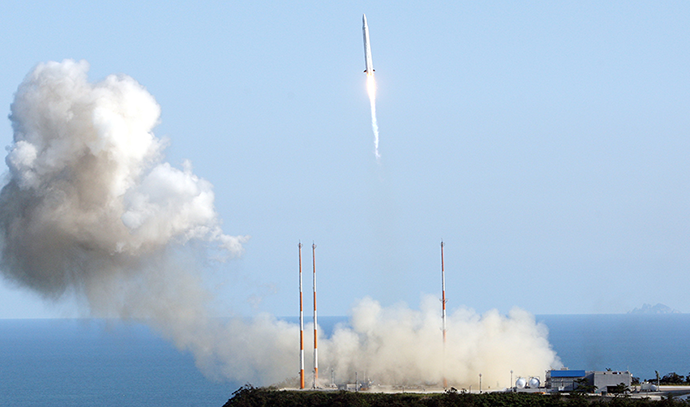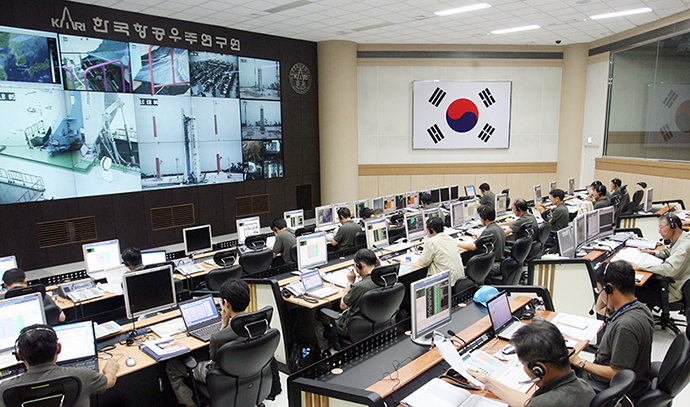Naro (KSLV-I) was a space launch vehicle development project implemented according to the National Space Development Plan. Its goal was to secure know-how and experience to develop space launch vehicles independently. Specifically, the main objectives were to design, manufacture, and test the satellite launch vehicle system, secure the technology to put satellites into orbit and carry out the launch operation, and develop and implement the equipment and facilities for satellite launch vehicles.
The Naro (KSLV-I) is a double-stage launch vehicle that consists of a liquid engine in the 1st stage and a solid kick motor in the upper stage to place a 100 kg satellite into low earth orbit. Russia developed the 1st stage, and Korea independently developed the top stage. The design goal was a launch vehicle weighing up to 140 tons, including the propellant, with length of 33 m, diameter of 3 m, and 1st-stage thrust of 170 tons. The satellite orbit was designed for a 300×1,500 km elliptical orbit. The 1st stage consisted of a liquid propellant engine with kerosene as fuel and liquid oxygen (LOX) as oxidizing agent. The propellant was supplied to the combustor through a turbopump. The 2nd stage consisted of a solid propellant (hydroxyl-terminated polybutadiene, HTPB) kick motor.
The Naro succeeded in the third launch on January 30, 2013 after failing the first launch in 2009 and the second launch in 2010.


